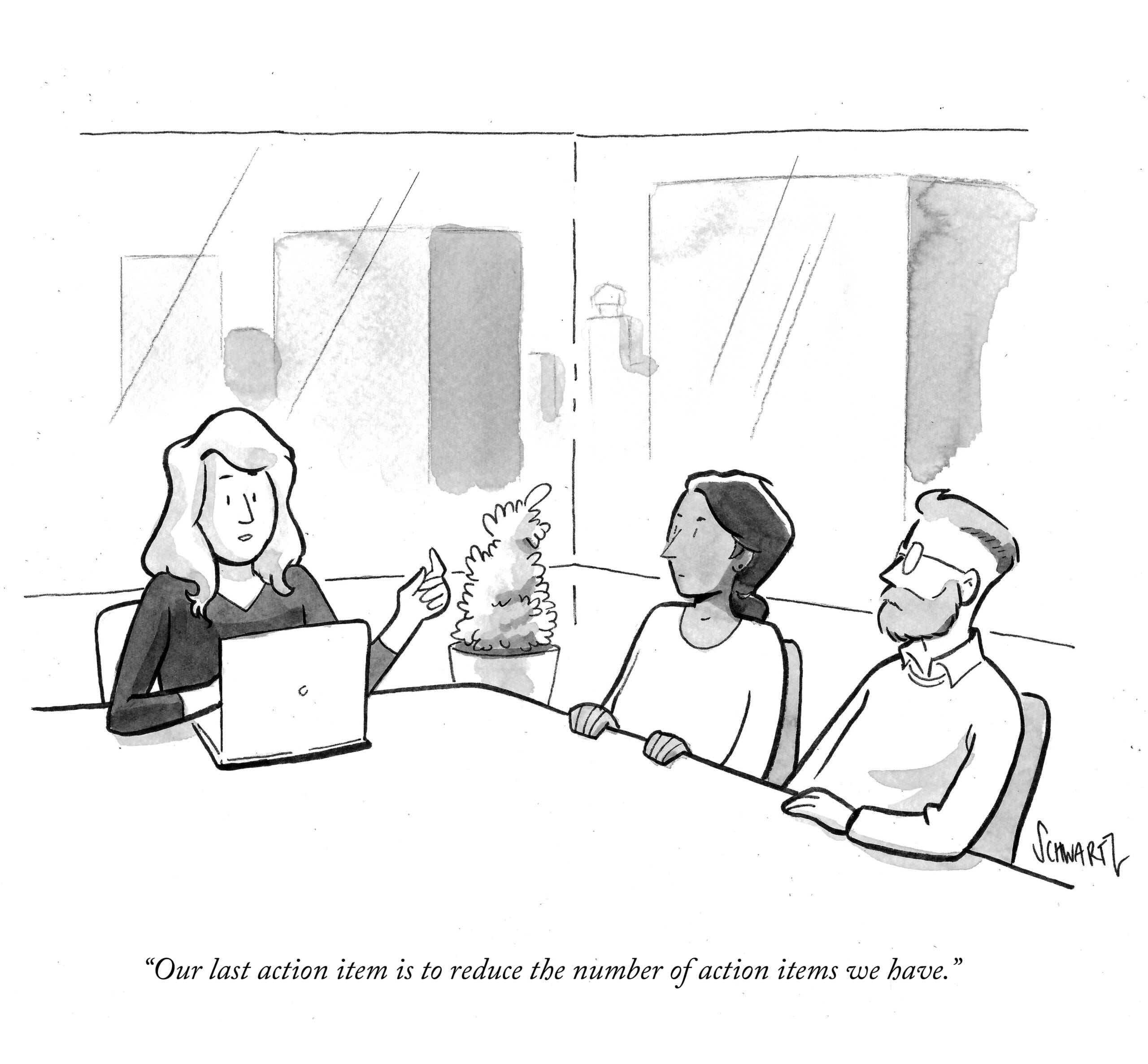Workplace trends
America’s office spaces are the emptiest they’ve been in decades
A staggering 19.6% of office space in major cities wasn’t leased in Q4, according to Moody’s Analytics, marking the highest vacancy rate since at least 1979 – as far back as the data goes. While this new record certainly signals how remote work has shifted work habits, experts also explain that much of the market’s current malaise – and the reason vacancy is lower in the US than in Europe or Asia – is the result of previous overbuilding. In the 1980’s, easy lending had fueled a construction boom, but when the economy went into a recession in 1990, there was a glut of office buildings that couldn’t find tenants. That said, back then office returns did see a rebound once the economy bounced back, but this time around, most analysts expect offices to stay emptier because vacancies have less to do with economic cycles and more to do with the growing preference to work from home.
London’s mayor says Brexit isn’t working
Britain’s departure from the European Union has cost its economy some £140 billion so far and resulted in an economic output that’s 6% less than it would have been if the UK had remained in the EU, according to a recent report by Cambridge Econometric that was commissioned for City Hall. Per the findings, in 2023, the average Brit was nearly £2,000 worse off, and the average Londoner was nearly £3,400 worse off as a result of Brexit. The report’s calculations show that due to Brexit, there are now 1.8 million fewer jobs across the UK, with almost 300,000 fewer jobs in just the capital alone. In a keynote address to London’s political and business leaders last week, London’s mayor Sadiq Khan called on the UK government to “urgently build a closer relationship with the EU” in order to mitigate this significant economic decline.
The AI corner
OpenAI’s GPT store is official
Last week, OpenAI launched its new GPT marketplace where ChatGPT customers can buy and sell specialized chatbots, known as GPTs. More than three million custom bots have already been released, according to OpenAI, including one that searches and synthesizes results from 200M academic papers and one that creates SEO-optimized blog posts. The store categorizes GPTs by function, with categories like writing, research, programming, education, and lifestyle. OpenAI is also planning to launch a leaderboard for the top-performing bots. Details have not yet been finalized, but the company says it will launch a revenue-sharing program in Q1 of this year, through which the bot builders can be paid based on user engagement with their GPTs.
Intel has launched an enterprise generative AI company
Intel is making big moves in the AI space, spinning out Articul8 AI – a new enterprise generative AI company with the backing of asset manager DigitalBridge. The new entity builds off a proof-of-concept from an Intel collaboration with Boston Consulting Group (BCG) early last May. BCG was originally the only go-to-market supplier and customer of the system, but over the last few months, Intel has been scaling its platform to support more organizations across financial services, aerospace, semiconductors, telecommunications, and other industries that require high-level security and specialized domain knowledge. Intel’s spokesperson says that Articul8’s generative AI software is optimized for speed of deployment, scalability, security, and sustainability in order to address enterprise needs. According to insiders, Articul8 is part of Intel’s efforts to rival competitors like Nvidia and AMD.
Making your employees feel like you advocate for them
By monday.com
It’s widely known that promotions, salary increases, and performance-based bonuses have long been considered the clearest way to recognize top contributors, reward valued team members, and signal effective growth paths.
That said, it’s not always that simple. As a manager, while you are responsible for supporting your team members, you are also accountable to your organization, which means at times, you’ll have to balance the conflicting needs of your employees and the business. The result? There may come a time when even after you really advocate for your employee, they won’t receive the rewards they were hoping for – or that you feel they deserve. Whether it’s because of budget constraints, stricter criteria, or any number of other reasons the company may have for not being able to give your team member a raise or promotion, it’s so important for you, as a leader, to make sure your employees know that you recognize their contributions and are pushing for their success.
So, how can you help your employees feel like you’re advocating for them – even if they don’t wind up getting the promotion or salary bump they were hoping for?
Understand desired development paths
Recognize that not all of your employees are seeking the same kinds of growth paths and opportunities. That’s why in order to be an effective advocate for your team members, you need to know what you’re advocating for. Ask yourself what motivates each of your team members, how they want to grow, what their work-related grievances are, and which parts of their jobs they’re most excited about. If you don’t feel confident answering these questions on your own, schedule some time to meet with each team member to discuss these topics and give them space to be open with you. Make sure to take notes during or after these conversations so that you can reference them in later conversations and effectively follow up.
Provide frequent feedback
When your team member has key areas to improve before they can expect a promotion, do your best to provide them with clear feedback and relevant opportunities to help them get there. Throughout the year, share notes and guidance on what they’re doing well as well as where things could go better so that when formal feedback conversations or compensation talks arrive, nothing comes as surprise or appears unfair. Additionally, when opportunities present for them to exercise important skills and demonstrate growth, make sure to offer them up to signal your commitment to helping them improve. All of this effectively sends the message to your employees that you want them to succeed and that you’re actively trying to give them the tools they need to get there.
Initiate growth-related conversations
The greatest way to make your employees feel like you’re advocating for them? Be the one to bring up their growth and development. Don’t just wait for your team member to say something – be proactive about opening up the conversation to show them that you’re thinking about it and doing what you can to support them. When your team members feel comfortable speaking with you about their career paths and compensation, you can address their concerns, follow up, and demonstrate your commitment to their success. And this way, even if a time comes when someone on your team doesn’t get the promotion they were hoping for, they’ll be able to at least feel confident that you, as their manager, have their backs and genuinely care.
Set clear benchmarks
Do your best to establish clear benchmarks for what it takes to transition into a more senior position on your team. This means outlining key milestones to reach, setting quantitative KPIs, and defining important qualitative contributions that are expected in order to move up in the ranks. Remember that word travels fast at work, so whatever the standards are that you set, it’s important to be consistent when you speak about them with different team members. This way, when someone on your team gets promoted, there will be a cross-team sense that it’s straightforward and fair.
Give meaningful recognition
To make your employees feel like you’re advocating for them, you need to emphasize that you recognize their value. Send them a message when they do something great and whenever possible, spotlight their work in larger forums and give them opportunities to present it to others in order to ensure they receive credit for the impact they are bringing. When your team members feel like you acknowledge the great work they’re doing and are happy to find ways to make them feel recognized, they will feel more confident that you’ll go to bat for them when the time comes.
Be transparent
When relevant, be open about factors that may be influencing growth opportunities within your team. For example, if budgetary restrictions have left space for fewer promotions, be transparent with your employees to avoid the sense that their lack of advancement is personal or a result of you not effectively advocating for them. For example, saying something like, “To be honest with you, macroeconomic conditions are leading the company to be really strict about this round of promotions. I completely recognize the amazing work you’re doing and want you to know that even if it doesn’t happen this round, I’m going to continue to advocate for you and your growth.”
Identify underlying priorities
There are typically three key reasons employees want promotions: recognition of their valued contributions, compensation increases, and the ability to convey career growth for future job opportunities. So, if you’re not able to promote someone you know was expecting it, try to understand their underlying goals and priorities in order to still find ways to identify possible solutions.
For example, if a team member was hoping for a title bump given the additional responsibilities they’ve taken on and the positive impact they’ve delivered, perhaps you can find a way to give them the opportunity to accept a higher title ahead of a corresponding salary increase, which may have to come later given budget restrictions. Similarly, if a deserving team member was really hoping for a pay increase, maybe in the short term you can try and negotiate a one-time bonus, and promise to revisit a pay increase when the company is better positioned to offer raises.
Follow up
To effectively make your team members feel like you are their advocate, it’s important to actively follow up on growth-related conversations. If after a meeting there were some steps you were supposed to take on your end, reach out as soon as you have updates and keep them in the loop to convey that you’re really on it. Circling back on these types of conversations is an essential way to demonstrate that you take your team members’ growth and needs seriously and are doing everything you can to help them reach their goals.
Water cooler chatter
To protest rising prices, European retailer Carrefour is removing PepsiCo products from its shelves. In a rare public standoff between a grocer and a food maker, PepsiCo products like Pepsi, Doritos, and many others will no longer be stocked at Carrefours in France, Italy, Spain and Belgium. Apparently many of the supermarket customers cheered the move amid the high prices.
Willis Gibson, a 13-year-old boy from Oklahoma, “beat” Tetris. His Tetris score read “999999,” making him the first person to advance so far in the original Nintendo version of the popular puzzle game that his screen simply froze – a feat previously only considered possible with AI. The Tetris player prodigy reached Level 157, which actually made the game unplayable due to limitations in its coding.
Question of the week
Last week’s answer: 40%
This week’s question: On average, how much time do employees spend in meetings and on email?
Just for laughs

Action items = reducing action items
Don’t miss more quality content!

